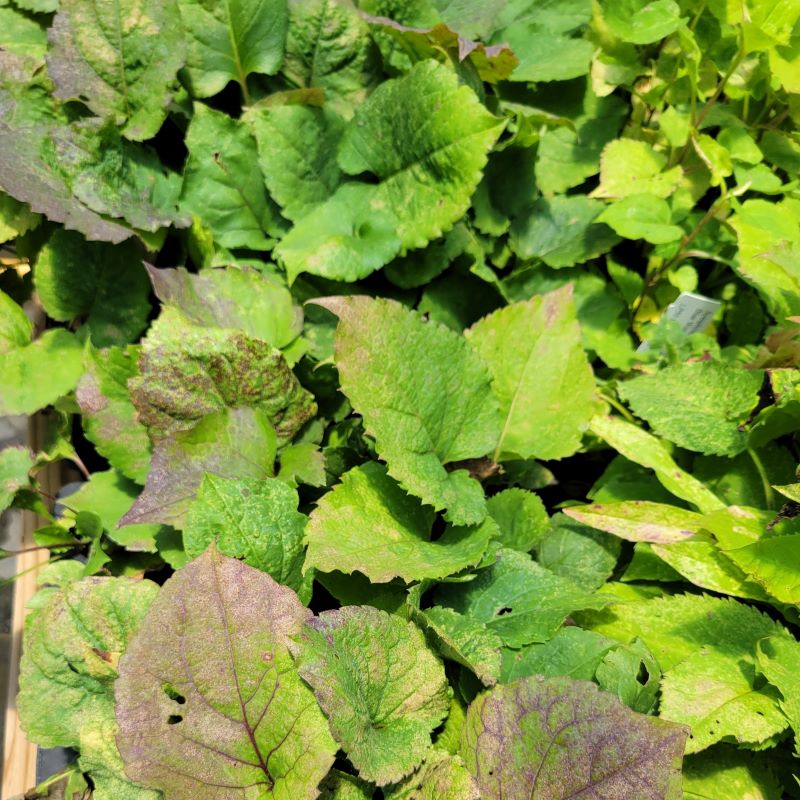
Eurybia (Aster) macrophylla (Bigleaf Aster) Unity Grown
- In Stock
- Inventory on the way
Eurybia macrophylla (syn. Aster macrophyllus), often referred to bigleaf aster, is a native, colony-forming perennial wildflower indigenous to much of northeastern North America. Growing two to four feet tall in part or full shade locations, bigleaf aster is easily identified by its large-lobed basal foliage and its profuse flowering made all the more impressive by its colony-forming habit; flowers are small and daisy-like, but have a blue or violet tinge to the near white petals.
Performing best in moist but well-drained sandy loams, bigleaf aster is a common find in many lowland forests, and provides a valuable food source for pollinators, but especially butterflies, in the late summer to mid fall. Though tender young leaves of Eurybia macrophylla can be cooked and eaten, care should be taken with choosing an appropriate planting location, as the tenderness of young leaves can result in foraging by deer and rabbits; once established, rhizomatic roots mean that bigleaf aster will spread and become difficult to remove, but this also makes them relatively tolerant of long-term deer browsing.

